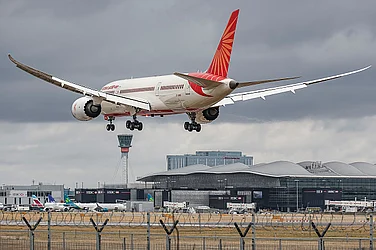The hijacking of Indian Airlines flight IC 814 should not have come as a surprise to the Indian intelligence community. To those involved in gathering information along the porous Indo-Nepal border, unmistakable signs of increased ISI activity in Nepal and the bordering Indian states of Uttar Pradesh, Bihar and West Bengal had become visible over a decade ago. Kathmandu today is the de facto regional headquarters of the ISI from where it masterminds a whole array of activities through a chain of madrasas in Bihar and the eastern states-a parallel locus of its operations in India.
Nepal is the preferred location for the ISIs regional command centre for simple reasons:
THE BIHAR CORRIDOR: In recent months Bihar has seen a spurt of ISI activity. This has been made easy by the lack of proper Indian monitoring along the Indo-Nepal border. With a large percentage of its security forces concentrating on checking militancy in the Kashmir valley, it has been a cakewalk for the ISI to expand its operations into this eastern state from its base in Kathmandu.
The Indo-Nepal border has been of strategic importance to the ISI from the late 80s when Pakistan launched "Operation Topac" to avenge its defeat in the 1971 Indo-Pak war. Since then, the ISI has dug in its heels in the region with the help of friends in the Indian underworld and the banned Maoist outfit in Nepal.
According to a senior Intelligence Bureau (IB) official, the ISIs gameplan has been to induce separatist feelings among Indian Muslims along the border and then send the more committed among them to camps in Pakistan and Afghanistan for arms training. It has also used the various unmanned entry points along the border to transport weapons, explosives, narcotics and fake currencies to select places in Bihar and the rest of the country. "This has been facilitated as the present infrastructure of policing and intelligence gathering along the Indo-Nepal border is grossly inadequate," says former Punjab police chief K.P.S. Gill.
The ISI has apparently been able to penetrate deep into Bihar. Just how easy it has been for the ISI to operate in the region was established last month when one Jitendra Singh and five members of his gang were arrested in Patna with a huge consignment of fake Indian currency notes. During interrogation, Singh confessed he used to make regular trips to Kathmandu where he was supplied with fake notes by an ISI agent from Karachi, Mohammed Akram. After collecting the money, Singh and his gang would hide it in the dummy petrol tank in his car and cross over to Patna through the Raxaul checkpoint. Once in the Bihar capital, the money would be channelled to various other places in India through ISI agents.
The hands-on role of Pakistans embassy too has come to light. Last September, militant Lakhbir Singh was arrested with 5 kg of RDX from a Kathmandu hotel by the Nepal police. The explosives were neatly packed in the "diplomatic bags" of Pakistans embassy in Kathmandu and were meant to be transported to select places in India. Several similar incidents in recent months give credence to the belief that the Pakistan embassy in Kathmandu is virtually functioning as the front office of the ISI in Nepal and coordinates the agencys activities in the bordering Indian states of Bihar, Uttar Pradesh and West Bengal. "We are aware of the ISIs activities in Nepal and are helping the Indian authorities to check them," says Nepals aig of police Pradit Shamsher Rana. There has been too little action, however, to back up these words.
What has helped fund the ISIs operations is the rampant smuggling that takes place along the Indo-Nepal border. "Nepal is a duty-free market and its imports have always been far in excess to demand," says an official at the Indian embassy in Kathmandu. Electronic goods, computer hardware, spices, textiles and pharmaceutical products have a ready market in India. Much of these are smuggled through special carriers. "Its an open secret that customs, police and district administration officials along the line are paid heavily," says a directorate of revenue intelligence officer. "Its called buying a line for a fixed period." Checking this cross-border traffic has become a major problem for the Indian authorities now.
THE INDIAN UNDERWORLD FACTOR: The ISI is also taking advantage of the Indian underworlds presence in Nepal. Many underworld operators, including Dawood Ibrahims gang members, fled to the Himalayan kingdom in the wake of the Mumbai blasts of March 1993 and have set up smuggling operations there. The ISI engages these people to carry sophisticated weapons, explosives and narcotics to India and enrol criminals and unemployed youth into its ranks. "Pakistans modus operandi is to infiltrate ISI agents through the international border at Nepal. These agents then find anti-socials, criminals and smugglers for destabilising normal life in the state," says a senior Bihar police officer. The Union Home Ministry has already declared districts like Purnea, Champaran, Darbhanga, Sitamarhi, Madhubani, Muzaffarpur, Saharsa and Samastipur as sensitive.
For India what is alarming is the involvement of some local politicians with the ISIs gameplan in Bihar. Mirza Dilshad Beg, a former member of the Nepal Parliament, is said to have actively worked for the ISI. Though he was gunned down in Kathmandu last year, his men are still active in the region. Mohammed Taslimuddin, former Rashtriya Janata Dal MP from Kishanganj, near the Nepal border, is another local leader suspected to have dealings with the ISI.
BUILDING LOCAL LINKS: The ISIs latest initiative has been to rope in some of Bihars extremist organisations. "Its been established that the Maoist Communist Centres (MCC) has intermittently linked up with the Peoples War Group (pwg) in Andhra Pradesh," says Neelmani, IG (zonal), Patna. "Recently a Lashkar-e-Toiba militant was arrested in Hyderabad for supplying arms to the pwg. There have also been reports of extremist organisations like the Ranvir Sena and CPI-ML (ND) procuring arms from the ULFA and Kashmiri militant outfits which have links with the ISI," he adds. According to experts, the lack of proper surveillance along the border is solely responsible for the present situation. The entire stretch of the 1,760 km Indo-Nepal border running from Uttar Pradesh to Bihar, West Bengal and Sikkim has only 22 land customs stations and only six of the 19 immigration checkposts are functional. A proposal to set up a patrolling force on the lines of the Indo-Tibetan Border Police for the Bihar corridor is pending with the Union Home Ministry for the past three years.
The teaming up of Nepals banned Maoist group with the ISI has created a dangerous situation for India. Raids conducted on the Maoist groups camps during the recent general elections in Nepal confirmed an old suspicion-that they possessed Pakistani arms. For the ISI it is a convenient link-up as it can use the Maoist groups camps in Nepals Chitwan jungle to train Indian and Nepali youths in terrorist operations.
The ISI has also been recruiting unemployed Muslim youth and pumping in money for the upkeep of mosques and madrasas along the border. According to intelligence reports these institutions are playing a key role in spreading anti-India sentiments. The funds are routed to them through the Himalayan Habib Bank, a joint venture of Pakistans Habib Bank and Nepals Himalayan Bank.
Another route the ISI has taken to further its designs is through the distribution of fake Indian currency notes. The flow of these notes is so widespread that the Nepal government has banned Rs 500 notes. "The fake currencies are so finely printed that it cannot be done by small operators. There is enough proof of it originating from Pakistan," says an Indian embassy official in Kathmandu. Last week, a junior staffer at the Pakistani embassy in Kathmandu was arrested by the Nepali police with fake Indian currency.
The situation is indeed alarming. Unless the Centre beefs up security and intelligence gathering and builds additional checkpoints in the region and puts pressure on the Nepal government to check smuggling, the ISI will continue to have a free run in its aim to destabilise India.
(Kumar Badal has been researching ISI activities along the
Indo-Nepal border for over three months.)


























